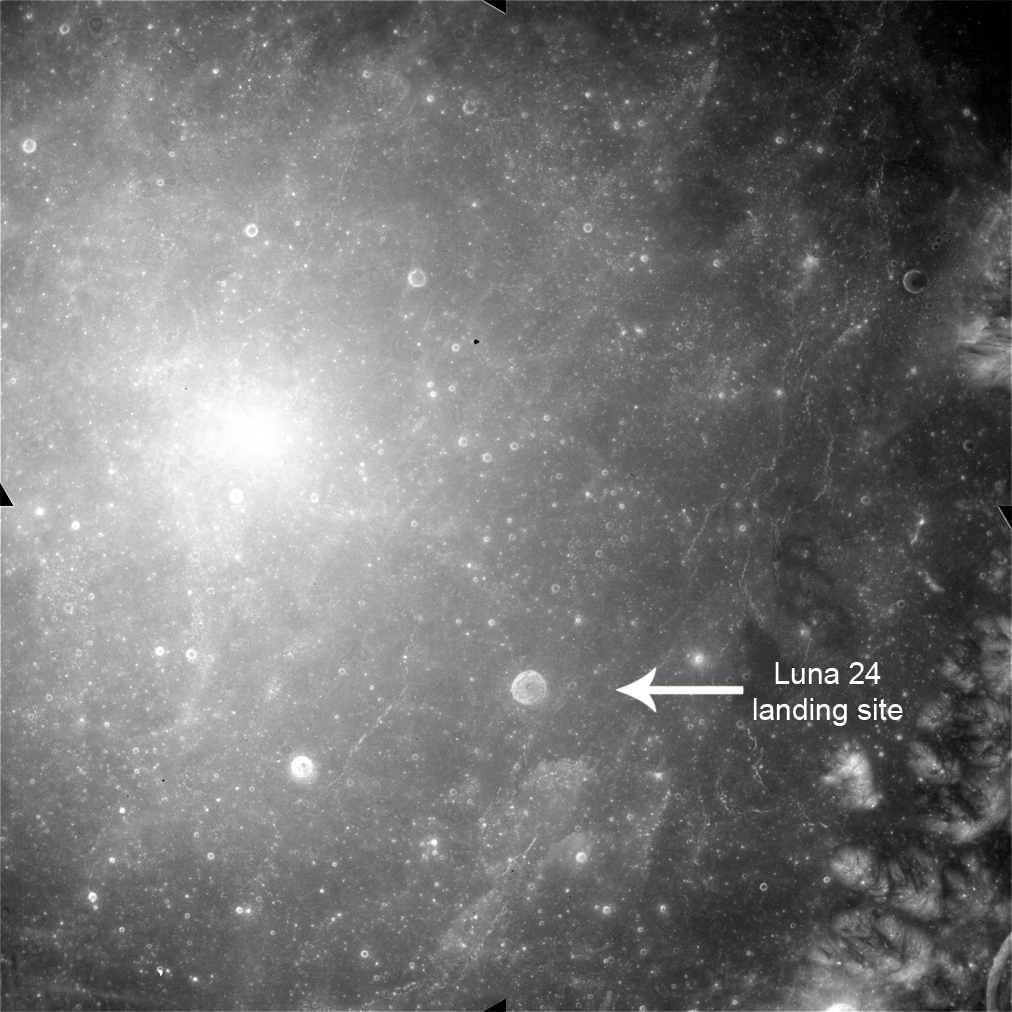
| Project Home | About the Scans | Browse Gallery | Image Map | Support Data | Resources | Ephemeris |
Featured Image - 12/18/2007
Luna 24 Landing Site
This Apollo metric image, acquired on July 31, 1971, (AS15-M-0367) shows part of Mare Crisium on the eastern limb of the lunar near side. On August 18, 1976, the Soviet Union's Luna 24 spacecraft landed in this area and collected a drill core of the lunar regolith. The approximate position of the Luna 24 landing has been highlighted on this image. It was the last mission that the Soviet Union launched to the Moon, the last time to date that a spacecraft has soft-landed on the lunar surface, and the last time that samples were collected by any spacecraft that had soft-landed on another planetary body. Luna 24 returned to Earth on August 22, 1976, bringing almost 170.1 grams of soil to Earth. Although the American Apollo missions of 1969-1972 were far more productive from a scientific standpoint (the Apollo missions not only returned about 1000 times more lunar material to Earth, but also the field investigation experience of the astronauts), the samples returned from Luna 24 are vital examples of lunar materials that originate from an area that was not directly sampled by the Apollo missions. Luna 24's sampling mechanism drilled about 2 meters into the lunar surface. Since Luna 24 landed in Mare Crisium, the returned sample consists of fine-grained lunar regolith products (i.e., impact glasses and agglutinates) as well as mare-derived basaltic rock fragments and pyroxene and olivine mineral fragments.
On the image the bright crater Fahrenheit is located to the left (northwest) of the landing site. The bright spot dominating the left side of the image is caused by the opposition effect, which occurs when an airless rough surface is observed under high incidence angles. This effect is caused by the absence of shadows and a process called coherent backscattering. The same phenomenon is seen by the Cassini spacecraft on Saturn's rings.
(Apollo Image AS-15-M-0367 [NASA/JSC/Arizona State University])

|
|
Space Exploration Resources |
|
 LPI LPI
|
